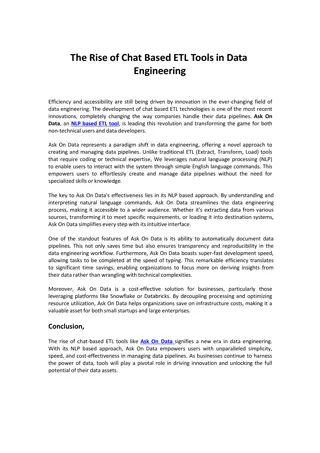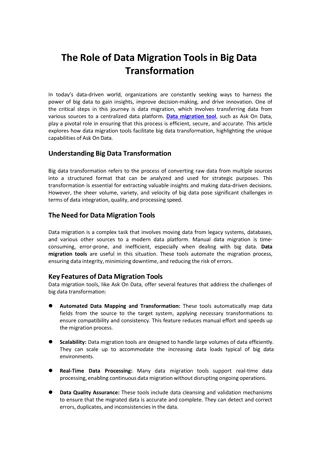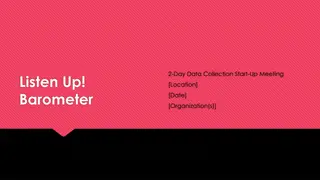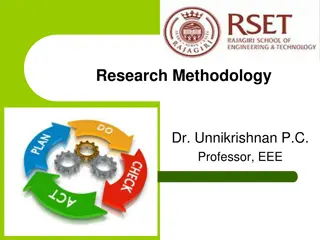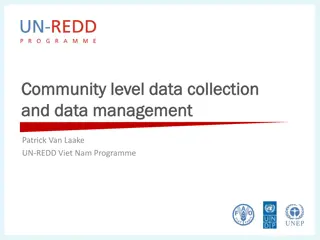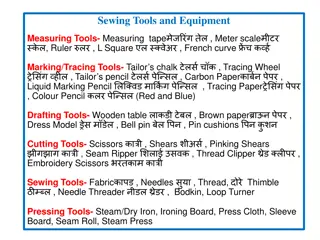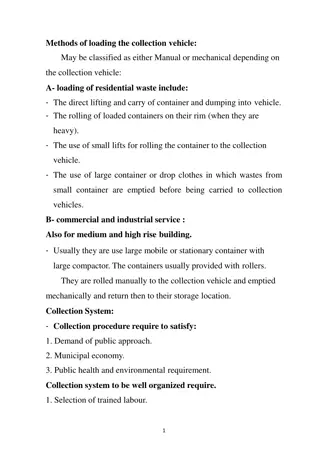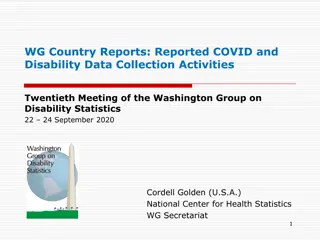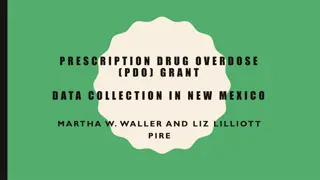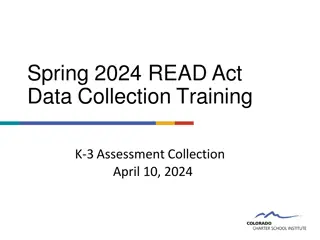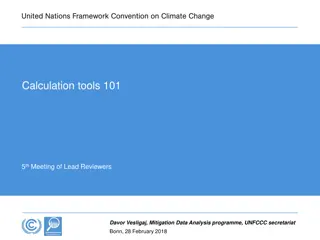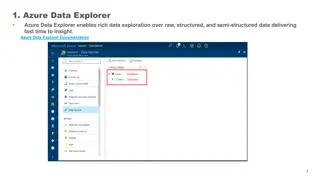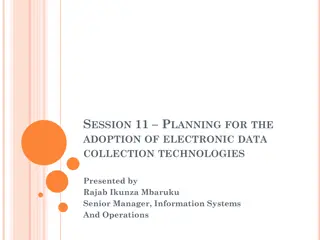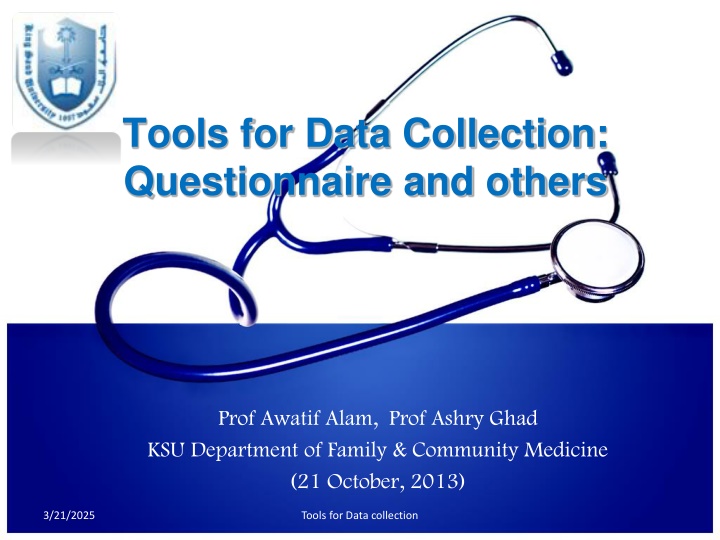
Effective Tools for Data Collection and Analysis
Discover the essential methods and instruments for data collection, including questionnaires, interviews, observations, and more. Learn to create suitable survey tools and understand the importance of accuracy and relevance in data selection. Explore the basic categories of information sought and enhance your understanding of attributes, attitudes, beliefs, and behaviors.
Download Presentation

Please find below an Image/Link to download the presentation.
The content on the website is provided AS IS for your information and personal use only. It may not be sold, licensed, or shared on other websites without obtaining consent from the author. If you encounter any issues during the download, it is possible that the publisher has removed the file from their server.
You are allowed to download the files provided on this website for personal or commercial use, subject to the condition that they are used lawfully. All files are the property of their respective owners.
The content on the website is provided AS IS for your information and personal use only. It may not be sold, licensed, or shared on other websites without obtaining consent from the author.
E N D
Presentation Transcript
Tools for Data Collection: Questionnaire and others Prof Awatif Alam, Prof Ashry Ghad KSU Department of Family & Community Medicine (21 October, 2013) 3/21/2025 Tools for Data collection
Objectives of the session By the end of the session the students should be able to; Have an understanding of the different types of tools used for data collection Appreciate the difference between an open ended and a closed ended questionnaire Construct an appropriate tool for their own survey 3/21/2025 Tools for Data collection
Instrument used to collect information for use in performance assessment, self-evaluation and external evaluation. Examples are mail, telephone, in-person and web-based surveys, direct or participatory observation, interviews, focus groups, expert opinion, case studies, literature search, and content analysis of internal and external records. The data collection tools must be strong enough to support the findings of the evaluation. 3/21/2025 Tools for Data collection
METHODS OF DATA COLLECTION 1.OBSERVATION: - clinical examination, radiography, biochemical, etc.. 2.INTERVIEWS & SELF- ADMINISTERED QUESTIONNAIRES: 3.THE USE OF DOCUMANTARY SOURCES: - clinical records, death certificates, mortality statistics, census, publications, etc. (SECONDARY DATA) 3/21/2025 Tools for Data collection
BASICS FOR SELECTION: 1. Accuracy and relevance of information. 2.The need for personnel, skill, equipment, etc. in relation to what is available, and the urgency with which results are needed. 3.The probability that the method will provide a good coverage, i.e will supply the information about target subjects. 4.The investigator s familiarity with a study procedure. 3/21/2025 Tools for Data collection
THE BASIC CATEGORIES OF INFORMATION TO BE SOUGHT: 1. ATTRIBUTES: 2. ATTITUDE: 3. BELIEFS: 4. BEHAVIOUR: 3/21/2025 Tools for Data collection
ATTRIBUTES: Refer to personal or demographic characteristics. Some of the most frequently requested attributes are age, sex, marital status, education, occupation, income, etc. 3/21/2025 Tools for Data collection
ATTITUDE: Questions are evaluative and reflect the respondent s views about the desirability of doing something. 3/21/2025 Tools for Data collection
BELIEFS: Are assessments of what a person thinks is correct or incorrect. These questions are designed to elicit people s perceptions of past, present, or future reality. 3/21/2025 Tools for Data collection
BEHAVIOUR: Questions related to elicit people s beliefs about their behavior, They might be concerned with what they have done in the past, what they are currently doing, or what they plan to do in the future. 3/21/2025 Tools for Data collection
USEFULNESS OF QUESTIONNAIRES: 1.Enable researchers to maintain uniformity in information collected during health surveys . 2.Ensures completeness of health records from each respondent . 3.Guarantees proper homework on the type of information required for a meaningful research. 4.Tests K of the investigator about the research. 5.Allows the investigator to prepare dummy tables for collected data. 3/21/2025 Tools for Data collection
QUALITIES OF THE QUESTIONS: 1. The number of questions should be determined in relevance to the proposed objectives. 2. Avoid irrelevant questions. 3. The questions must be simple, short, inquire about one thing at a time. 4. Avoid sensitive and very personal questions, however, if the topic is of such a nature, leave them to the end. 5. Avoid leading questions. 6. Arrange questions in an orderly manner . 7. Questions relating to the same issue should be kept together. 8. Avoid technical terms. 9. Use local language of community. 3/21/2025 Tools for Data collection
FORMAT OF A QUESTIONNAIRE: Questionnaires are composed of two main parts: The first part includes information for identifying the respondent s house no., address, record no, income, educational level, marital status, ect. This is called the socio demographic information The second part pertains the relevant questions to the study objectives which may be subdivided such that questions in any section deal with specific theme or pattern. 3/21/2025 Tools for Data collection
DECIDING QUESTION STRUCTURE: 1. CLOSE-ENDED with ordered choices: Choices for answers are provided for these questions. The respondent s task is to find the most appropriate place on an implied continuum for his/her response. e.g. Subject may be asked to indicate the degree of agreement with choices 1.STRONGLY AGREE 2. AGREE 3.UNDECIDED 4. DISAGREE 5.STRONGLY DISAGREE
DECIDING QUESTION STRUCTURE: 2. CLOSE-ENDED with unordered response choices : Answer choices are provided, Respondents must choose from among discrete, unordered categories by independently evaluating each choice and selecting the one that best reflects his/her situation. e.g. Marital Status: 1. Single 2. Married 3. Widowed 4. Divorced 3/21/2025 Tools for Data collection
DECIDING QUESTION STRUCTURE cont.. 3. PARTIALLY CLOSE-ENDED: These questions provide a compromise. Although answer choices are provided, respondents have the option of creating their own responses. e.g. provide the option OTHERS (SPECIFY) . 3/21/2025 Tools for Data collection
DECIDING QUESTION STRUCTURE cont. 4.OPEN-ENDED QUESTIONS: These questions have no answer choices from which respondents select their response. Respondents must create their own answers and state them in their own words. e.g. Why did you stop smoking? 3/21/2025 Tools for Data collection
REQUIRMENTS OF QUESTIONS: 1. Face validity. 1. answers. Respondents are expected to know the 3. Clear and unambiguous. 4. Not be offensive. 5. Be fair. 3/21/2025 Tools for Data collection
Advantages & Disadvantages: Close-ended questions: Provide greater inter-rater reliability. May be scored quickly. Provide greater uniformity and simplify the analysis. HOWEVER They may be open to interpretive error due to guessing , And They limit the variety and details of responses.
Advantages & Disadvantages: Open-ended questions: May be constructed more quickly. Provide fewer stimulus cues for guessing. Play an important role in exploratory surveys. Provide interesting information which may be used to brighten up a dull report. HOWEVER They may produce difficulty in interpreting and categorizing responses. They may be more difficult to score accurately.
Closed ended or Open ended questions? Which one to use? It is sometimes advisable to use an open-ended question first, in a pretest, in order to collect free responses which can be used as a basis for constructing closed categories. 3/21/2025 Tools for Data collection
THANK YOU For further assistance: Aalam@ksu.edu.sa 3/21/2025 Tools for Data collection

